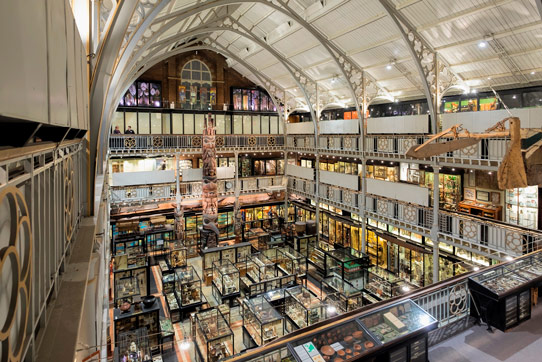Soraa Inc of Fremont, CA, USA, which develops solid-state lighting technology fabricated on 'GaN on GaN' (gallium nitride on gallium nitride) substrates, says that its LED lamps have been installed at the University of Oxford's Pitt Rivers Museum in the UK (which has more than 400,000 visitors annually). As well as saving energy and money, the museum chose Soraa's LED lamps to illuminate its rare collections of anthropology and archaeology artifacts.

The university installed 500 VIVID MR16 LED lamps, which should save the museum an estimated £45,000 over the next 5 years and reduce its carbon emissions by 44 tonnes each year. Not only does the new LED lighting make the museum more energy efficient and the displays easier to see, it also emits no harmful ultra-violet light, protecting the artifacts from UV light damage. Soraa worked with its UK partners, 4D Lighting, to supply the lamps to the Pitt Rivers Museum.
Picture: The Pitt Rivers Museum at the University of Oxford (photo credit: Redshift Photography).
The lighting designers for the museum chose Soraa's lamps with Violet-Emission 3-Phosphor (VP3) technology to showcase the space's industrial design and to illuminate the colors and whiteness of the relics on display. Soraa says that, utilizing every color in the rainbow (especially deep red emission), its lamps render warm tones accurately and achieve a color-rendering index (CRI) of 95 and deep red (R9) rendering of 95. Also, unlike blue-based white LEDs without any violet emission, the lamps have violet emissions to properly excite fluorescing brightening agents, including natural objects like human eyes and teeth, as well as manufactured white materials such as textiles and paper.
"The Soraa LED lamp produces color rendition that is comparable to a halogen light source," comment's University of Oxford's Robert Gregg. "Utilizing the Soraa SNAP system, we now have the flexibility to adjust the beam angles for our many displays."





